BY STEVE POND
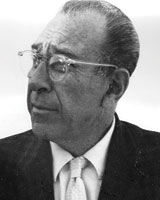 Herbert Biberman
Herbert Biberman |
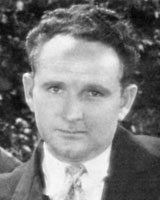 Frank Borzage
Frank Borzage |
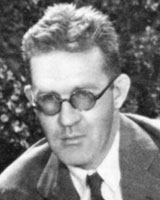 John Ford
John Ford |
 Howard Hawks
Howard Hawks |
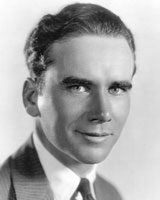 William K. Howard
William K. Howard |
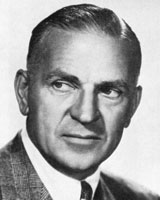 Henry King
Henry King |
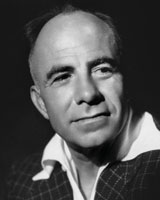 Gregory La Cava
Gregory La Cava |
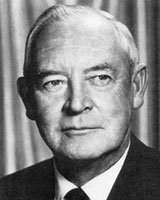 Rowland Lee
Rowland Lee |
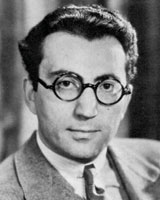 Rouben Mamoulian
Rouben Mamoulian |
 Lewis Milestone
Lewis Milestone |
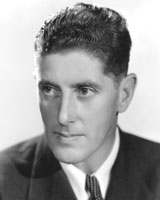 Edward A. Sutherland
Edward A. Sutherland |
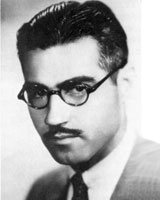 Frank Tuttle
Frank Tuttle |
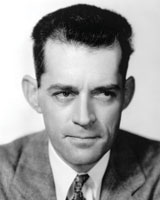 W.S. Van Dyke
W.S. Van Dyke |
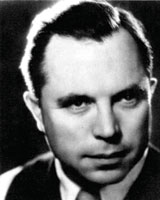 King Vidor
King Vidor |
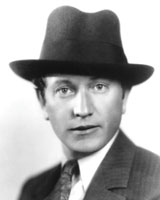 Richard Wallace
Richard Wallace |
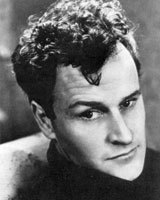 William Wellman
William Wellman |
The announcement came in mid-January 1936, overshadowing news about the purchase of Universal Studios, the big opening of the musical Strike Me Pink and a legal battle over the rights of theaters to show double bills. "DIRECTORS ORGANIZE!" blared a banner headline across the front page of Daily Variety, which breathlessly reported that a group of motion picture directors had just dropped a bombshell on the producers and studio moguls who ran Hollywood and controlled the fates of everyone who worked in the movie business. They were now members of an organization called the Screen Directors Guild, and they intended to negotiate as a group for better treatment, better pay and better conditions.
The move, coming as it did from a band of mavericks, many of whom were successful enough to wield considerable clout on their own, sent ripples of shock through Hollywood, which had already seen its actors and writers form unions in the previous two years. Wrote the Hollywood Reporter, "Get-together of the directors, the industry's most individualistic group, while several times predicted and often discussed, came as a distinct surprise."
But that surprise arrived only after years of provocation, of diminishing control and worsening conditions; it came in the midst of an organized labor movement that was sweeping the Depression-torn United States, and had taken hold in Hollywood; and it came after months of quiet discussion among a handful of directors, followed by a few clandestine meetings and a secret trip to Sacramento.
"Now directors, because of the nature of their profession (some might say the cussedness of their natures, too) are among the greatest individualists in the world," said John Ford, one of the founders and a man who understood why the move might take a few people by surprise. "But all of us realized the need to band together to protect the integrity of motion picture production."
It was a dramatically different time for directors in Hollywood in the '30s, but the demands made by the new guild would be familiar to its successors today: more input into script development, casting and other aspects of pre-production; freedom from interference from micromanaging producers and studio executives; the right to be in the editing room and deliver their own cut of the film that would bear their name.
"What brought them together initially were issues related to the treatment of directors and their creative rights," says the DGA National Executive Director, Jay D. Roth. "That includes everything from the director's credit, to problems with producers taking credit for work that directors did, to having the chance to edit your movie. And I think the issues that brought them together in 1935 are the same issues that directors deal with today. Those core issues are still here."
Some of those issues had existed since the beginning of the movie industry - but the dozen-plus men who met in private to plot the course of the Guild had been fighting their battles individually for years. Since 1915, the directors' only organization was a group called the Motion Picture Directors Association (MPDA), with a charter that described its aims as "to maintain the honor and dignity of the profession," "to improve the moral, social and intellectual stand of all persons" in movies, "to cultivate social intercourse" among directors and "to aid and assist all worthy distressed members of this organization." Essentially, the MPDA was a non-profit gentlemen's club, with rituals that were vaguely Masonic in nature.
"They had a clubhouse on Cahuenga Avenue [in Hollywood], and they had directors' chairs with names on the back," remembered one of the Guild's founders, King Vidor, in a 1986 interview conducted for the DGA's 50th anniversary. "But it seemed to be more social; it didn't suggest labor or group bargaining in any way."
In fact, according to a document entitled "A History of the Motion Picture Directors Association" by Douglas Bell, the MPDA turned down overtures from the American Federation of Labor in 1923, when the tide of unionization was beginning to rise across America. The following year, the MPDA did launch a plan to take the reins of production into its own hands, announcing that it would fund a handful of movies over which its members would exercise control and reap the profit. But no sooner had that scenario been announced than the motion picture producers closed ranks, declared that they would blacklist any participant, and effectively killed the plan. Thus chastened, the MPDA returned to its purely social function, though it also published a magazine on the art of directing entitled The Motion Picture Director.
Over the years, some directors had continued to try to organize. John Ford, who became president of the MPDA in 1927, was one of those who agitated for more involvement. In 1931, four directors - King Vidor, Cecil B. DeMille, Frank Borzage and Lewis Milestone - announced a plan to form a guild and produce independent films under a "Directors Declaration of Independence." They even planned to name the new collective the Directors Guild - but could not secure financing for their project.
It's not hard to see why the men would want to step outside the studio system, which at the dawn of the sound era was becoming increasingly restrictive for directors. Studio chiefs assigned directors to projects a day or two before the beginning of principal photography, essentially cutting them out of the pre-production process; on the other end, they kept them out of the editing room as well. Multiple directors would be assigned to a single production, or a producer or studio chief would supply a list of shots and expect the director to do nothing but execute somebody else's artistic (or, more likely, commercial) vision.
Even those who'd enjoyed significant artistic freedom during the days of silent films found their power eroding: Vidor, for example, had long enjoyed near carte blanche to make socially conscious films such as The Crowd. But as the studio system strengthened in the early '30s, as moguls began to exercise more of an assembly-line approach to filmmaking, he found that he was being asked to make lighter, less substantial movies. When he tried to find a studio willing to back his social drama Our Daily Bread, he wrote in his autobiography, A Tree Is a Tree, "All the major companies were afraid to make a film without glamour, even though admitting that the struggle depicted was a heroic one." Vidor was forced to go outside the studio system and finance the film with personal loans.
In March 1933, a crumbling economy caused President Roosevelt to enforce a bank holiday in a largely successful attempt to stop runs on banks around the country. In the aftermath of that move, studio chiefs announced their own plan to cut salaries by 50 percent throughout the industry. To announce and help implement the plan, they enlisted the support of the Academy of Motion Picture Arts and Sciences. The fledgling Academy was used by the industry to mediate labor disputes, but in its early years it essentially sided with the studios and the producers, and helped fight the rising tides of unionization.
It was in that climate when, in early March 1933, the Academy called a meeting at the Hollywood Roosevelt Hotel. "The industry leaders wanted the employees to take a 50 percent pay cut," remembered Vidor. "The meeting was called to let the heads of a few of the studios try to put this cut in effect. The feeling was very strong there that anyone who got up and objected to... taking this cut was fired.... And a few fellows had courage enough to do it, to get up and talk, and you could see the anger on some of the executives' faces. You could see this anger growing that these men were objecting to what they wanted to do."
After the meeting, Vidor said, a handful of the directors in attendance - he remembered Henry King, but couldn't recall who else was involved - knew it was time to get organized. "The realization was very strong that we must have an organization to speak for us," he said. "So after the meeting was over, about six or eight directors stood on the sidewalk on the side street [likely Orange Avenue] by the Roosevelt Hotel. It was just bluntly stated, 'We must have a guild to speak [for us], and not the individual, who can be hurt by standing up for his rights.'"
The pay cut went into effect and lasted for eight weeks, though opposition from IATSE resulted in a less draconian cut for many industry workers. Before salaries were restored, the writers had already taken action, forming the Screen Writers Guild in early April 1933. Two months later, the actors followed suit, founding the Screen Actors Guild. Studios and producers refused to recognize or negotiate with either guild, even after the June passage of the National Industrial Recovery Act, part of which granted labor unions the right to collective bargaining. And while the studios agreed to the Code of Fair Competition for the Motion Picture Industry, which permitted workers to form unions and was signed into law on Nov. 27, the code failed to guarantee that the studios would recognize those unions.
"I firmly believe that this kind of cooperation is plainly our duty unless we are satisfied to remain an insignificant and exclusive club," Ford said in a speech to fellow directors in 1933. "Let's try to get back to the old days - when the people on the set looked to the director for leadership. Let's pitch in with our co-workers and try to find a way out of this mess, and for the industry. Let's not be high-hat; let's help the others. I grant you that the producers haven't recognized us, but for Christ's sake - and I say that with reverence - let's not get into a position where the workers of the industry don't recognize us."
Around the country, strikes spread from mine and auto workers to farmers and teamsters, often meeting with violence at the hands of resistant employers. Congress, though, strengthened the hand of the working man as the decade progressed. The Wagner Act, which was passed in 1935, created the National Labor Relations Board and affirmed the right of unions to collective bargaining; previous laws had already banned employers from offering contracts which prohibited employees from unionizing.
By that point, the studios were on stronger financial footing than they had been two years earlier - but many in Hollywood still feared another slash in pay. To director Rouben Mamoulian, money was a symptom of deeper problems. "A lot of directors were underpaid," he said in another interview conducted for the DGA's 50th anniversary, "and being underpaid also meant that they lacked authority in many fields [where] the director should have authority." By the end of 1935, Paramount Pictures exacerbated the creative battles by notifying its contract directors that if they didn't accept the pictures assigned to them, their contracts would be voided. "The idea that moved us was not just to get more salary for the director and to get directors more authority," said Mamoulian. "The ultimate purpose was better films."
The directors may have walked away from the Hollywood Roosevelt determined to act, but it took more than two years for them to realize their goal. "The Roosevelt Hotel meeting with the group on the sidewalk cinched the idea, put the idea into effect," said Vidor. "The actual formation was done at my house with the 13 men [and] the $1,300."
"Thirteen men and $1,300" - that's the meeting that is now viewed as the moment when the Screen Directors Guild was born. Two days before Christmas, on Monday, Dec. 23, 1935, a group of directors, most likely numbering around 13, met at Vidor's house, which was located up Coldwater Canyon above Beverly Hills (several years earlier he'd become one of the first to move out of the flats and into the hills). A little more than two weeks later, on Jan. 8, a group of about 15 met once more, this time dispatching attorney Lawrence Beilenson to file incorporation papers with the state of California.
Those meetings, particularly the first, have long since passed into legend. As is the case with most legends, though, the details have changed in the retelling. All of the original participants have long since passed on, and their recollections of the founding were often conflicting when they were still alive - no doubt due to the likelihood that some of the founding directors were at both of the meetings, some at only one. Whether the contributions were made during the initial meeting at Vidor's home, as most retellings have it, or at the subsequent meeting on Jan. 8, remains unclear.
In addition, other meetings had certainly taken place since the encounter outside the Roosevelt. In his autobiography, They Started Talking, Frank Tuttle recalls a gathering at his house, and in his oral history Vidor also remembered "half a dozen" directors meeting at Tuttle's.
Early accounts identify the participants at the key Dec. 23 meeting as Vidor, Borzage, Ford, Howard Hawks, King, Rowland V. Lee, Mamoulian, Milestone, Edward A. Sutherland, Tuttle, William Wellman "and others whose names are lost to history"; other Guild-written accounts and oral histories included W.S. "Woody" Van Dyke, William K. Howard, Gregory La Cava, Herbert Biberman and Richard Wallace as attending the first meeting.
However, the details played out, this much is indisputable: The Screen Directors Guild was launched in late 1935 and early 1936 by a band of mostly prominent directors, numbering around 15, who met in secret. To prevent the news from leaking out, the articles of incorporation, which were filed on Jan. 13, 1936 in Sacramento, identify the group as "S.D.G., Inc."; five days later, after the Guild had been announced, a certificate of amendment was filed changing the name to Screen Directors Guild, Inc.
The day the announcement hit the papers on Jan. 17, the SDG received 100 applications. (There was no initiation fee for directors who joined before the next meeting.) "Directors have done much to make this business," William K. Howard told the Hollywood Reporter, "and they are about to be disenfranchised."
At the end of that first week, Variety covered the new Guild in a regular column titled "Aside from the News." After noting that the Guild founders included "quite a number who are noted for their intestinal fortitude and independence," it described what it saw as the goals of the Screen Directors Guild.
"They want to make pictures in such a way that they will participate in the production practically from its creation," the paper wrote. "They want to be in on story conferences; they want to have a say on the selection of their casts; and they want to be in on the cutting of their pictures, as they feel if they are given screen credit, they should also be given a right to protect their reputations on what reaches the screen..."
And then, the anonymous Variety columnist made a prediction: "If they conduct themselves in a sane, consistent and constructive manner, the producers cannot ignore their grievances."
Of course, the producers tried to ignore the grievances; recognition came three years later, under the administration of the second SDG president, Frank Capra. But that story — the expanding membership rolls, the battles in front of the National Labor Relations Board — came later. In January 1936, the story began with a small group who stood together and fought for their art, in a way that their successors would continue to fight for for the next seven decades.
"What drove Vidor and the crew was the integrity of their work. And that's also true today," notes Roth, summarizing the reasons behind the founders' actions.
"The debate is not just about the director, but about the nature of the art form," he adds. "Is the picture the singular vision of one person, albeit a collaborative expression, or is it more of an industrial product? That was the debate in 1936, and it's the debate in 2006."